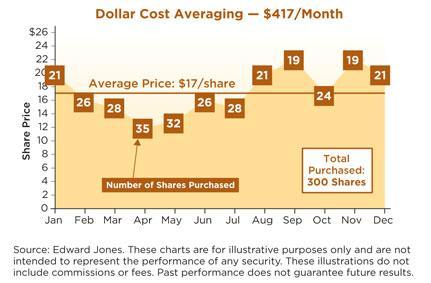
Before you learn to read forex chart, you have to understand the concept behind them. Forex charts display the exchange rate between currencies. They represent the open, low, high, and close price of currency. Knowing the relationship between currencies can help you decide when to sell or buy. You can find this information on a forex chart. Before you can begin to read forex charts, however, there are some important points you should know. Each one will be explained in detail in this article.
Candlestick chart
When reading forex charts, one of the most common mistakes traders make is using the Candlestick chart. Candlestick patterns have a purpose. If there is a bullish line visible, it means that buyers are in charge. Therefore, it is likely that the price will move higher. A small bearish signal means that the opposite is true. The reason behind this is simple: a bullish bar indicates that sellers are in control. A bearish line, on other hand, means that sellers are trying push the price lower.

Line chart
A line forex chart presents the same data as a candlestick chart, except the lines connect different closing prices. These charts show a simplified view of price movement but do not offer the same detail as candlestick graphs. While a line chart may not show the exact time when prices increased or decreased, it is helpful to be able to read them. Here are some tips:
Point-and-figure table
To draw a Point-and-Figure forex chart, you must first select the time frame and box size for your data. You can choose to plot X, or O for any price movement exceeding 100 pips. The time frame can also take into account the day's high or lowest. There are many types of Point and Figure charts. The following are a few of the most common types.
SMA
Moving averages (SMAs) are indicators that smooth out daily price fluctuations and are commonly used to confirm trend changes. A rising SMA signifies an uptrend; a falling SMA means that there is a downward tendency. Analysts may also associate the trend with the closing price. A price that is close to the SMA can be interpreted as a bearish signal. The SMA's duration is up to the trader and the trading style.

Bollinger bands
You're looking for how to read Bollinger band on your forex charts? This is the place to be. This indicator provides traders with unique insights into price and volatility. It is an excellent tool for both trend-following and determining an entry or exit point to trade. However, you should use it with caution as it can be misleading. This is a simple way to learn how to read Bollinger Bands (Forex charts) and stay ahead of your competition.
FAQ
What is security in the stock market?
Security is an asset which generates income for its owners. Most security comes in the form of shares in companies.
Different types of securities can be issued by a company, including bonds, preferred stock, and common stock.
The earnings per share (EPS), as well as the dividends that the company pays, determine the share's value.
You own a part of the company when you purchase a share. This gives you a claim on future profits. You receive money from the company if the dividend is paid.
You can sell your shares at any time.
Stock marketable security or not?
Stock is an investment vehicle that allows investors to purchase shares of company stock to make money. This is done through a brokerage that sells stocks and bonds.
You could also invest directly in individual stocks or even mutual funds. In fact, there are more than 50,000 mutual fund options out there.
There is one major difference between the two: how you make money. Direct investment is where you receive income from dividends, while stock trading allows you to trade stocks and bonds for profit.
In both cases, you are purchasing ownership in a business or corporation. If you buy a part of a business, you become a shareholder. You receive dividends depending on the company's earnings.
Stock trading gives you the option to either short-sell (borrow a stock) and hope it drops below your cost or go long-term by holding onto the shares, hoping that their value increases.
There are three types stock trades: put, call and exchange-traded funds. Call and put options let you buy or sell any stock at a predetermined price and within a prescribed time. ETFs can be compared to mutual funds in that they do not own individual securities but instead track a set number of stocks.
Stock trading is very popular because it allows investors to participate in the growth of a company without having to manage day-to-day operations.
Stock trading can be a difficult job that requires extensive planning and study. However, it can bring you great returns if done well. It is important to have a solid understanding of economics, finance, and accounting before you can pursue this career.
How do you invest in the stock exchange?
Brokers are able to help you buy and sell securities. A broker can sell or buy securities for you. Brokerage commissions are charged when you trade securities.
Banks are more likely to charge brokers higher fees than brokers. Banks often offer better rates because they don't make their money selling securities.
To invest in stocks, an account must be opened at a bank/broker.
If you use a broker, he will tell you how much it costs to buy or sell securities. Based on the amount of each transaction, he will calculate this fee.
Ask your broker questions about:
-
You must deposit a minimum amount to begin trading
-
How much additional charges will apply if you close your account before the expiration date
-
What happens if you lose more that $5,000 in a single day?
-
How many days can you keep positions open without having to pay taxes?
-
whether you can borrow against your portfolio
-
How you can transfer funds from one account to another
-
What time it takes to settle transactions
-
How to sell or purchase securities the most effectively
-
How to Avoid Fraud
-
How to get help if needed
-
Can you stop trading at any point?
-
What trades must you report to the government
-
Reports that you must file with the SEC
-
Do you have to keep records about your transactions?
-
If you need to register with SEC
-
What is registration?
-
How does it affect me?
-
Who needs to be registered?
-
What are the requirements to register?
What is a mutual-fund?
Mutual funds can be described as pools of money that invest in securities. They allow diversification to ensure that all types are represented in the pool. This reduces risk.
Mutual funds are managed by professional managers who look after the fund's investment decisions. Some funds permit investors to manage the portfolios they own.
Mutual funds are more popular than individual stocks, as they are simpler to understand and have lower risk.
What are the advantages of owning stocks
Stocks have a higher volatility than bonds. When a company goes bankrupt, the value of its shares will fall dramatically.
However, if a company grows, then the share price will rise.
To raise capital, companies often issue new shares. This allows investors to purchase additional shares in the company.
To borrow money, companies use debt financing. This gives them cheap credit and allows them grow faster.
Good products are more popular than bad ones. Stock prices rise with increased demand.
As long as the company continues producing products that people love, the stock price should not fall.
What is the difference between a broker and a financial advisor?
Brokers help individuals and businesses purchase and sell securities. They handle all paperwork.
Financial advisors are experts in the field of personal finances. They help clients plan for retirement and prepare for emergency situations to reach their financial goals.
Banks, insurance companies or other institutions might employ financial advisors. Or they may work independently as fee-only professionals.
Consider taking courses in marketing, accounting, or finance to begin a career as a financial advisor. Also, it is important to understand about the different types available in investment.
Statistics
- For instance, an individual or entity that owns 100,000 shares of a company with one million outstanding shares would have a 10% ownership stake. (investopedia.com)
- The S&P 500 has grown about 10.5% per year since its establishment in the 1920s. (investopedia.com)
- Individuals with very limited financial experience are either terrified by horror stories of average investors losing 50% of their portfolio value or are beguiled by "hot tips" that bear the promise of huge rewards but seldom pay off. (investopedia.com)
- Ratchet down that 10% if you don't yet have a healthy emergency fund and 10% to 15% of your income funneled into a retirement savings account. (nerdwallet.com)
External Links
How To
How to Invest Online in Stock Market
You can make money by investing in stocks. There are many methods to invest in stocks. These include mutual funds or exchange-traded fund (ETFs), hedge money, and others. The best investment strategy is dependent on your personal investment style and risk tolerance.
You must first understand the workings of the stock market to be successful. Understanding the market, its risks and potential rewards, is key. Once you've decided what you want out your investment portfolio, you can begin looking at which type would be most effective for you.
There are three main types: fixed income, equity, or alternatives. Equity is the ownership of shares in companies. Fixed income means debt instruments like bonds and treasury bills. Alternatives include commodities, currencies and real estate. Venture capital is also available. Each category has its pros and disadvantages, so it is up to you which one is best for you.
Once you have determined the type and amount of investment you are looking for, there are two basic strategies you can choose from. One strategy is called "buy-and-hold." You purchase a portion of the security and don't let go until you die or retire. The second strategy is "diversification". Diversification means buying securities from different classes. If you purchased 10% of Apple or Microsoft, and General Motors respectively, you could diversify your portfolio into three different industries. Multiple investments give you more exposure in different areas of the economy. It helps protect against losses in one sector because you still own something else in another sector.
Risk management is another key aspect when selecting an investment. Risk management will allow you to manage volatility in the portfolio. A low-risk fund could be a good option if you are willing to accept a 1% chance. If you are willing and able to accept a 5%-risk, you can choose a more risky fund.
Your money management skills are the last step to becoming a successful investment investor. A plan is essential to managing your money. You should have a plan that covers your long-term and short-term goals as well as your retirement planning. You must stick to your plan. Don't get distracted by day-to-day fluctuations in the market. Stay true to your plan, and your wealth will grow.